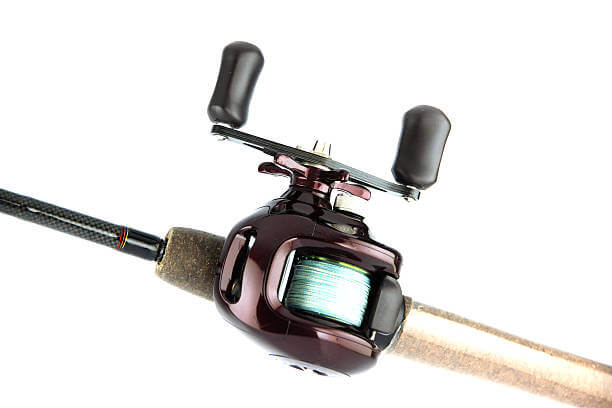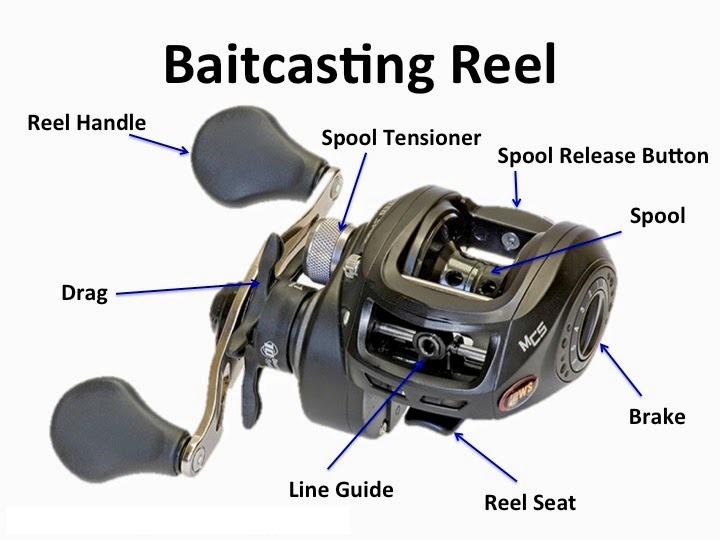
Alright, fellow anglers, let’s talk about the baitcaster reel. This bad boy is the muscle car of the fishing world – powerful, precise, and a whole lot of fun to use (once you get the hang of it).
I still remember my first encounter with a baitcaster. I was a young, eager angler, fresh off the spincast reel training wheels. My dad handed me this sleek, mysterious contraption and said, “Son, it’s time you learned how to use a real reel.” I was excited, intimidated, and maybe a little bit cocky. Needless to say, I spent the better part of that afternoon untangling bird’s nests and cursing under my breath. But once I finally figured it out, the feeling of casting a lure with pinpoint accuracy and launching it halfway across the lake was pure adrenaline.
So, if you’re ready to take your fishing game to the next level, it’s time to unravel the mysteries of the baitcaster reel. Don’t worry, I’ll break it down in simple terms and even share some insider tips I’ve picked up along the way.

At first glance, a baitcaster might seem like a complex piece of machinery, but it’s actually quite simple once you understand the basic components.
The spool is the cylindrical part of the reel that holds your fishing line. When you cast, the spool spins rapidly, releasing line and sending your lure or bait flying through the air. The size and design of the spool determine how much line it can hold and how well it casts different types of lures. Larger spools are better for heavier lines and bigger lures, while smaller spools are better for lighter lines and finesse techniques.
Ah, the bane of every baitcaster angler’s existence: the dreaded backlash. It’s that tangled mess of line that happens when the spool keeps spinning after your lure hits the water. But fear not, young padawan, because baitcasters come equipped with a braking system to save the day.
There are two main types of braking systems:
Most modern baitcasters have both types of brakes, allowing you to fine-tune the braking system for different lures and conditions. Start with more braking when you’re first learning to cast, and then gradually reduce it as you get more comfortable.
Pro Tip: Don’t be afraid to experiment with different brake settings. There’s no one-size-fits-all solution, and what works for one angler might not work for another. It’s all about finding the sweet spot that gives you the best combination of casting distance and control.
The levelwind system is a small mechanism that moves back and forth across the spool as you reel in your line. Its job is to evenly distribute the line across the spool, preventing it from piling up on one side and causing tangles.
A well-functioning levelwind system is essential for smooth casts and retrieves. It also helps to reduce line friction, which can lead to longer casts and less wear and tear on your line.
The handle and gears are the muscles of your baitcaster. They work together to transfer power from your hand to the spool, allowing you to reel in your catch.
The gear ratio of a reel is the number of times the spool turns for each complete turn of the handle. A high gear ratio reel (e.g., 7:1) retrieves line quickly, while a low gear ratio reel (e.g., 5:1) offers more power for reeling in heavy fish or lures.
Choose a gear ratio that matches your fishing style and target species. If you’re fishing for fast-moving fish like bass or pike, a high gear ratio reel is a good choice. If you’re targeting larger, stronger fish like muskies or catfish, a low gear ratio reel will give you the power you need.
The drag system is a clutch mechanism that allows line to be pulled from the spool under pressure. It’s essential for fighting fish, as it prevents your line from breaking when a fish makes a strong run.
A good drag system should be smooth and consistent, allowing line to be released smoothly even under heavy pressure. Most baitcasters have a star drag, which is a simple dial that you turn to adjust the drag pressure.
Pro Tip: Always test the drag system before you start fishing. You want it to be set just tight enough to prevent the line from slipping when you set the hook, but not so tight that it breaks the line when a fish runs.
Ball bearings are small, round bearings that reduce friction in a reel’s moving parts. They’re located throughout the reel, including the spool, handle, and levelwind system.
The more ball bearings a reel has, the smoother it will feel when you cast and retrieve. A higher number of bearings can also indicate a higher quality reel. However, it’s important to note that the quality of the bearings is more important than the quantity.
Look for reels with high-quality stainless steel or ceramic bearings. These will last longer and perform better than cheaper alternatives.